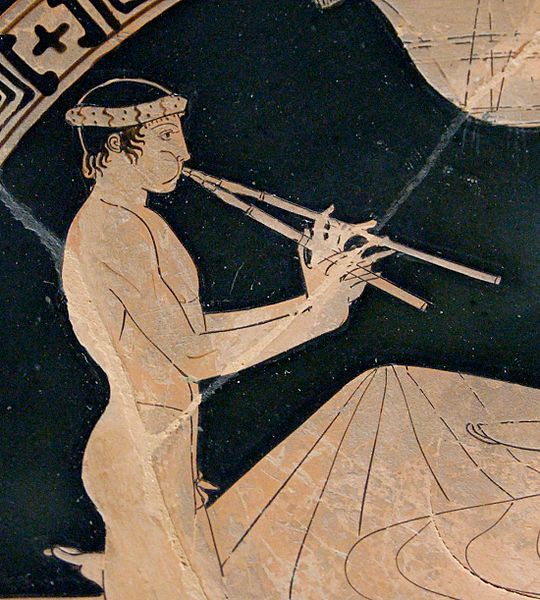An aulos or tibia (Latin) was a wind instrument in ancient Greece, often depicted in art and also attested by archaeology.
Aulos
The competition between Marsyas and Apollo on a Roman sarcophagus (290–300)
Theatrical scene from a Pompeiian mosaic showing a performer with an aulos and phorbeiá.
Herakles tenth labor
Music was almost universally present in ancient Greek society, from marriages, funerals, and religious ceremonies to theatre, folk music, and the ballad-like reciting of epic poetry. This played an integral role in the lives of ancient Greeks. There are some fragments of actual Greek musical notation, many literary references, depictions on ceramics and relevant archaeological remains, such that some things can be known—or reasonably surmised—about what the music sounded like, the general role of music in society, the economics of music, the importance of a professional caste of musicians, etc.
Ancient Greek warrior playing the salpinx, late 6th–early 5th century BC, Attic black-figure (lekythos)
Musical scene with three women painted by the Niobid painter. Side A of a red-figure amphora, Walters Art Museum
A 17th-century representation of the Greek muses Clio, Thalia, and Euterpe playing a transverse flute, presumably the Greek photinx.
The Cylix of Apollo with the tortoise-shell (chelys) lyre, on a 5th century BC drinking cup (kylix)








